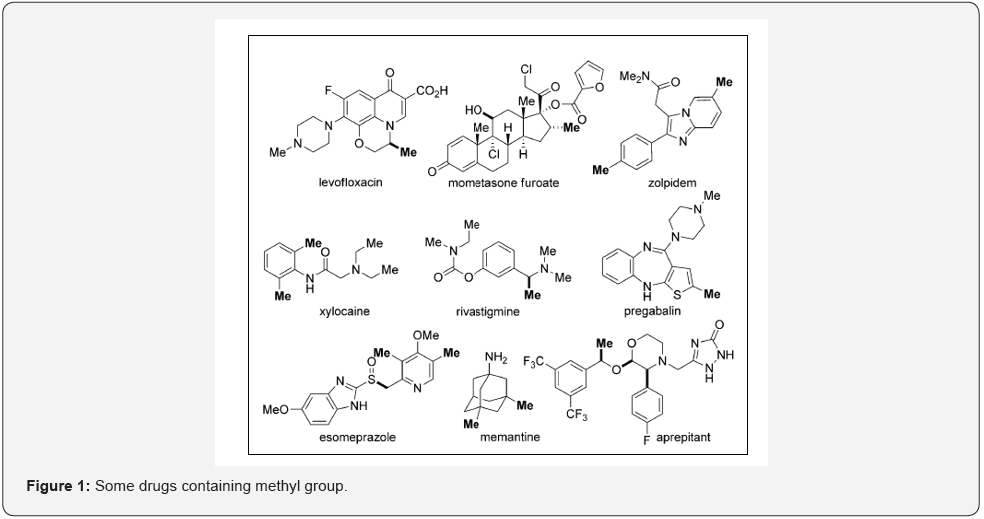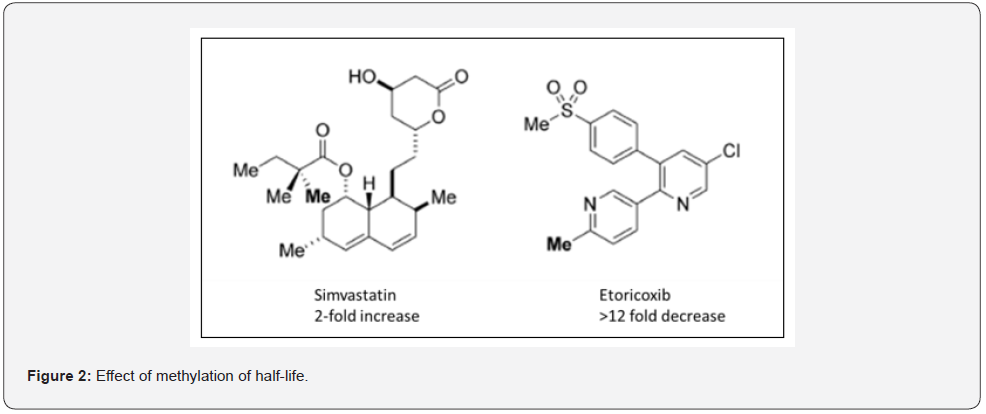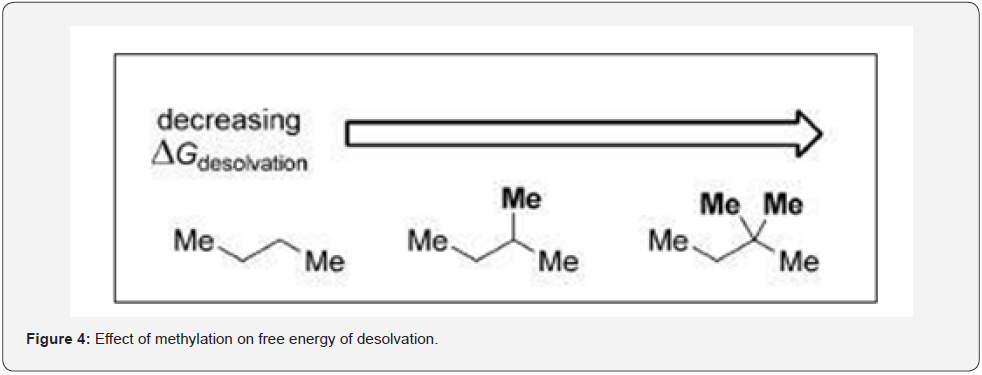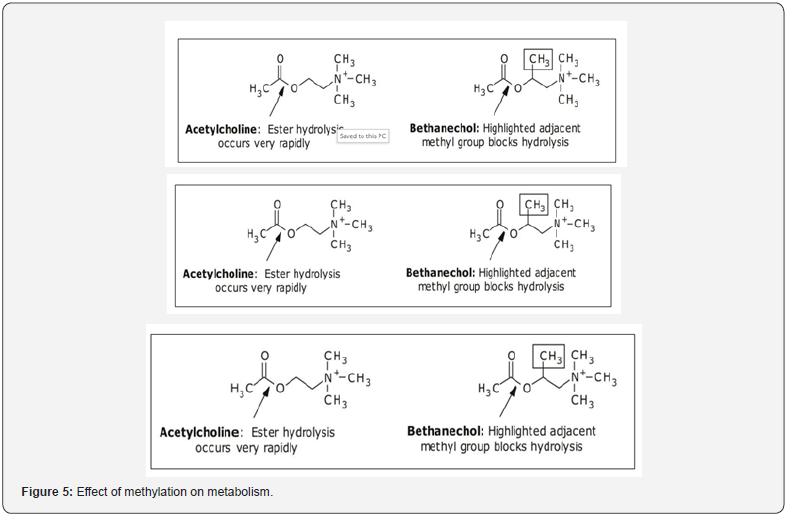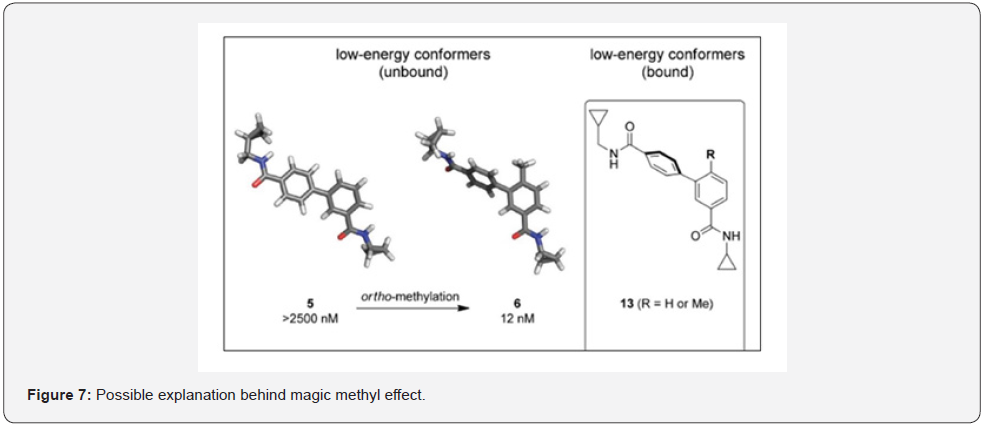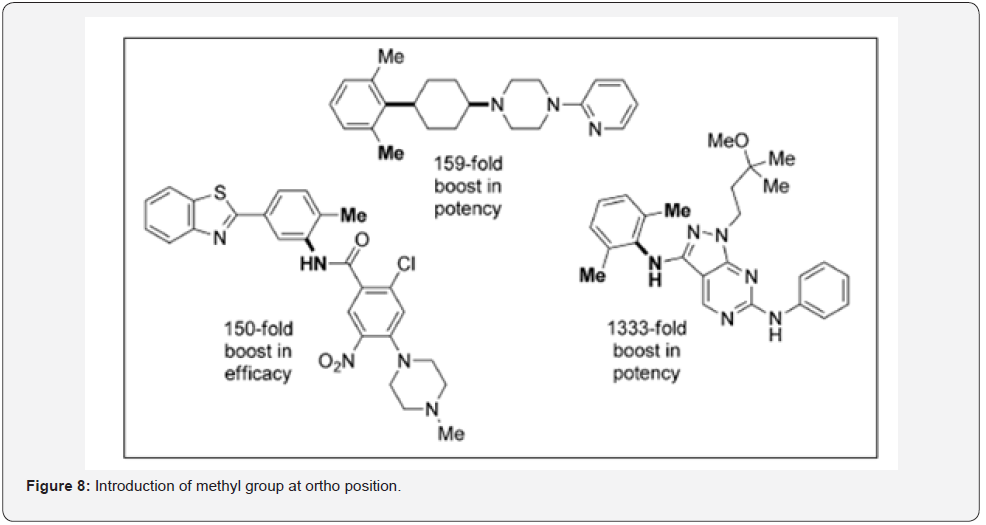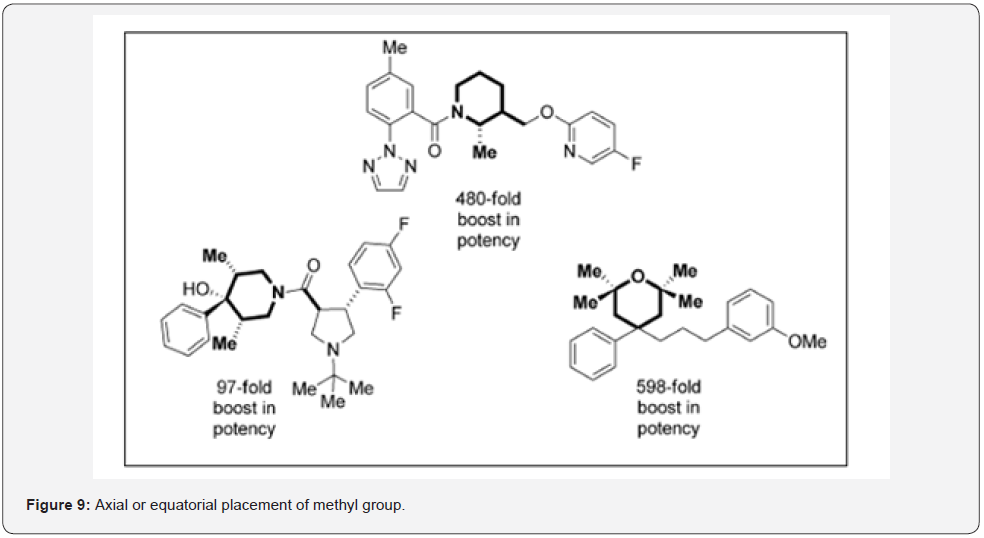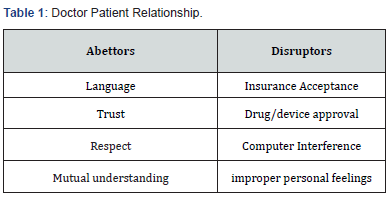Purpose: Empirical examination of the
moderating influence of dogmatism (DG) on the relationship between adult
attention deficit (AAD) and operational (traditional) project manager
effectiveness (OPME).
Design/methodology/approach: 160 actively
employed business graduate students participated in a business courses
where they were assigned to 4-person project teams responsible for
completing a major business project. The project contained 4
sub-projects each of which was managed by a different team member. At
the end of semester each team member rated the others on their project
management effectiveness. Each subject completed a self-report measure
of dogmatism and identified a close associate who completed an observer
version of the Brown Attention Deficit Scale. Linear regression was used
to test the hypothesis that DG moderates the relationship between AAD
and OPME.
Findings: DG is a statistically significant
moderator of the relationship between AAD and OPME. The negative
relationship between AAD and OPME significantly declines as DG
increases.
Research limitations/implications: Future
research requires use of samples that are more directly associated with
the workplace. Further investigation of the impact of AAD symptoms,
including potentially positive manifestations like entre/intrapreneurial
cognition and creativity, is needed to fully understand the impact of
the disorder within the project management nomological network.
Practical implications: Organizations need to
be aware of the impact of AAD and DG on OPME. The provision of adapted
project management training, productivity tools, a workspace free of
unnecessary distractions and both professional and peer coaching is
suggested for disordered project managers and participants.
Organizations need to help disordered employees find substitutes for
dogmatic thinking processes that possess similar protective and
decision-making benefits but avoid the related inflexibility and social
challenges. Employee assistance programs that raise awareness and
provide access to assessment are an important part of multimodal
management of the disorder in the workplace.
Social implications: Employers are facing
increasing social, legal and economic pressures to support and make
effective use of functional but disordered employees. This research
provides constructive suggestions for how to accommodate and support
disordered project managers.
Originality/value: This is the first empirical
examination of the relationships between AAD, DG and OPME and is of
value to researchers, organizational development specialists, human
resource management specialists, managers and employees who are seeking
effective multimodal management of attention related disorders in the
workplace.
Keywords:
Attention deficit disorder; Adult attention deficit; Adult attention
deficit disorder; Attention deficit hyperactivity-impulsivity disorder;
Adult attention deficit hyperactivity-impulsivity disorder; Project
management; Project manager performance; Project manager effectiveness;
Dogmatism
At least 5% of the adult global population have
clinical levels of attention deficit disorders [1] costing the global
economy approximately 144 million days of lost production per annum [2].
Changing role requirements for many workers is delegating and
distributing increasingly complex responsibilities and associated
competencies throughout organizations [3]. These new role requirements
are dependent on higher order cognitive processes often disrupted by
adult attention deficit disorders (AADDs) [4,5]. Managing this challenge
requires research on how AADDs
influence individual and team performance [6].
Working conditions that engage more complex higher order
cognitive processes intensifies the need for coping responses
among disordered adults [7]. Recent research suggests that
disordered adults develop rigid attachments to particular sets
of beliefs in order to constrain the extent to which self-directing
(higher order) cognitive processes are disrupted by external or
internal stimulus [8].
This research study examines the moderating influence of
dogmatism on the relationship between adult attention deficit
(AAD) and the operational effectiveness of project managers
(OEPM), the component of project management most dependent
on the higher order cognitive processes typically disrupted by
AAD.
Research conducted by Brown [9] on symptoms that
commonly occur among adults with attention deficits produced
the following 5 symptom clusters (factors):
a) difficulty activating and organizing to work (difficulty
getting organized and started on tasks predominantly caused by a
relative higher arousal threshold and/or chronic anxiety).
b) difficulty sustaining attention and concentration
(difficulties staying focused on priority tasks that are not of high
personal interest, receiving and organizing information and
resisting distraction).
c) difficulty sustaining energy and effort (insufficient and/
or inconsistent levels of general energy and difficulty sustaining
effort required to complete important tasks).
d) difficulty managing emotional interference (difficulty
with intense, negative and disruptive mood states; relatively
high and sustained levels of irritability and emotional reactivity;
difficulty managing emotions that constrain the development of
constructive relationships).
e) difficulty utilizing working memory and accessing/
recalling learned material (episodic or consistent chronic
forgetfulness, difficulty organizing, sequencing and retaining
information in short term memory, and problems accessing and
using learned material).
Brown [9] uses dimensional (gradations of severity) as
opposed categorical (non-disordered vs disordered) measurement
of the symptom clusters to determine the overall level of AAD. This
is consistent with evidence that AAD symptoms and associated
impairment fall along a continuum [10,11]. AAD is defined as a
persistent pattern of inattention and related cognitive, emotional
and effort related symptoms that occur with varying levels of
severity and creates progressively greater challenges within the
personal, academic and work life of adults as severity increases [9,12]. The use of dimensional measurement and correlational
analysis helps to reveal the influence of AAD within nomological
networks that influence organizational behavior [12,13].
Research studies using dimensional measurement of AAD has
identified associations with difficulty with teamwork [14-16];
greater reliance on co-workers [17] difficulty managing conflict
[16], increased stress [18], lower self-efficacy [18] and less
effective task management systems [15].
Attention related disorders are also associated with positive
behaviors like the ability to work in a fast paced environment,
ingenuity, innovation, creativity, determination, perseverance,
risk taking and intense focus on things of interest [19,20] which
may explain why entrepreneurs appear to have significantly
higher prevalence rates [19]. Recent research by White & Shah
[21] suggests that the disorder is associated with higher overall
levels of creative achievement across a variety of occupational and
task domains.
The ability of an organization to foster employee
innovativeness, creativity and an entre/intrapreneurial
orientation may be one of the most significant contributors to
sustained organizational success within an increasingly globalized
economy [22]. Research by Zhou [23] suggests that employees
with low creativity benefit from working closely with highly
creative employees. Organizational innovation, creativity and
success is therefore potentially influenced by the manner in which
highly creative employees, many of whom may be disordered to
varying degrees, are distributed and deployed throughout the
organization.
Managerial strategies that appropriately leverage the
potential strengths of the disorder while removing, reducing or
mitigating the deficits are needed to ensure successful deployment
of disordered employees. Most researchers and practitioners
agree that multimodal management of the disorder involving a
combination of medicinal and non-medicinal support (counseling,
coaching, training, supportive conditions and conditions aligned
with strengths) has the greatest potential for success [24]. This
requires a comprehensive understanding of the impact of the
disorder on personal performance capacity (core workplace
competencies, motivation and other performance supporting
personal states); performance behavior including key mediators
and moderators; and performance outcomes at the individual and
team level [17].
Definition and impact
Project management is defined as the application of
knowledge, skills and techniques for executing a temporary
endeavor undertaken to create a unique product, service or result
[25]. The project management process (cycle) includes a variety
of phases or stages that are often dependent on the type of project but
typically include the stages of initiating, planning, executing,
monitoring and controlling, handing off and closing the project
[26].
There are a wide variety of project types determined by the
nature of the output (e.g. building a skyscraper, developing a new
engine, designing and delivering a training service, producing
a software update etc.), the size of the project (e.g. scope,
number of stakeholders etc.), the execution culture (numerous
stakeholder checks due to security issues, established and
standardized processes, high level of execution autonomy etc.)
and the conditions within which project execution occurs (e.g.
industry, sector, organizational culture, time pressures, resource
constraints etc.). Projects are also completed by either individuals
or teams. In an attempt to identify the key differentiating features
of projects, Shanhar & Dvir [27] and others have suggested the
following general differentiating dimensions:
a) complexity (extent of scope, number of elements that
must be considered when making project decisions, project
organization requirements, number and nature of constraints
that must be addressed, number of participants and stakeholders,
diversity of output requirements and success criteria).
b) uncertainty (degree of clarity about project goals and
execution requirements, rate and degree of change influencing
project goals and execution requirements).
c) technology (level of technology required to support the
project).
d) novelty (the level of originality in project goal, processes
and/or output).
e) pace (the criticality and rigidity of the project time
frame).
f) Obeng (1994) provided a simple classification of project
types based on two dimensions - the level of clarity and detail
at the outset of the project about what needs to be done and
how to do it. These dimensions are used to create the following
classification:
i. closed (stakeholders know what to do and how to do it
at the outset).
i. closed (stakeholders know what to do and how to do it
at the outset).
iii. semi-closed (stakeholders are given a reasonable level
of clarity about what needs to be done, although often somewhat
general, but still need to figure out how to do it).
iv. open (stakeholders are unsure of what needs to be done
and unsure of how things will be done when the project is initiated
and in some cases at various points along the way).
Closed conditions are generally associated with low
levels of complexity, uncertainty, technology, novelty and pace. Contemporary conditions have elevated all of the key
differentiating factors resulting in a shift away from closed
conditions toward more semi-closed and open conditions [28].
Measurement of project success has traditionally focused on
what is referred to as the golden triangle – meets the deadline,
within budget and addresses the established scope [29]. This
approach has been criticized for being too narrow [30] especially
when considering the broader impact of key projects like Microsoft
Windows which was considered a significant failure relative to
the original deadlines, budget and scope. Criteria used to measure
project performance has expanded to include the following levels
[27,31]:
a) process (optimal identification, selection,
implementation and management of project processes).
b) project management (meets time, budget, scope
requirements).
c) customer/deliverable (quality, quantity, specifications,
acceptance, use, impact, satisfaction).
d) business success (impact on business goals and
performance).
e) strategic success (impact on market, competitors,
investors and other key stakeholders).
e) strategic success (impact on market, competitors,
investors and other key stakeholders).
g) team impact (extend to which the execution of the
project supports the capacity of project team members to continue
working together in an efficient and effective manner).
The clarification and expansion of performance criteria has
improved the ability to identify the key determinants, mediators
and moderators of project performance, including the contribution
of the personality, management/leadership style and associated
competencies of project managers and participants [32].
Research on the influence of the project management
competencies suggests a contingent relationship and the need
for alignment with project type, conditions and stage [33,34].
In an attempt to categorize the expanding domain of project
management competencies, Shenhar & Div [27] suggest that
project management competencies be organized into 4 groups:
a) traditional/operational excellence (planning and
executing a sequence of project activities to ensure completion of
the project scope on time and within budget).
b) dynamic adaption (management of change within the
project).
c) strategic focus (strategic alignment of the project,
creating a competitive advantage for the organization and adding
value at the strategic level of the organization).
d) inspired leadership (motivating and managing project
team members and other stakeholders to evoke and maintain
their support and commitment to the project, creating project
spirit through supporting vision, values and artifacts) [35].
They suggest that the profile of required project management
competencies depends on the complexity, uncertainty,
technology, pace and novelty of the project. Traditional
(operational excellence) competencies may be both necessary
and sufficient within closed project conditions that are relatively
stable, simple, low tech and do require high levels of novelty.
Although the traditional competencies remain necessary, they
become increasingly insufficient as the complexity, uncertainty,
technology, novelty and pace increase (project conditions become
more open). Increasingly open project conditions requires
the addition and integration of dynamic adaptation, strategic
focus and inspired leadership with the traditional (operational
excellence) competencies.
Although the failure rate of projects remains a concern
[32], research suggests that effective project management is
a contributor to business success in a variety of industries and
sectors [36,37] and that project performance is influenced by the
personality, management/leadership style and competencies of
the project manager [38-42].
Many of the core project manager competencies rely on
higher order cognitive processes which are typically disrupted
by attention related disorders [43,44]. The significant reliance of
traditional (operational excellence) competencies on higher order
processes like impulse inhibition, planning, modeling, prediction,
goal and priority setting, sequencing and problem solving suggests
that operational effectiveness may be particularly impacted by the
disorder. These are also referred to as the process competencies.
The ongoing necessity and foundational nature of traditional
competencies (operational excellence) in spite of growing
insufficiency as project conditions become more open, suggests
that AAD may have an important influence within the nomological
network that determines both project manager, team member and
project performance. A search of multiple databases (medline,
psyc-info, academic source premier, business source premier
etc.) produced no empirical studies on the relationship between
attention related disorders/conditions and project management.
Definition and impact
Belief and disbelief systems satisfy the need for a cognitive
framework that defines situations and provides protection from
threats [45]. Dogmatism is generally defined as a closed belief
system resulting from a rigid attachment to particular beliefs
that are resistant to opposing beliefs. Rokeach [45] suggests that
dogmatism is defensive in nature and encompasses a constellation
of psychoanalytic defenses that help to shield a vulnerable
mind. More recently, Altemeyer [46] defined dogmatism as “an unjustified and unchangeable certainty in one’s beliefs, reflecting
conviction beyond the reach of evidence to the contrary” (p. 201).
Rigid attachment to a particular set of beliefs helps to protect
self-directing processes that are relatively more vulnerable to
disruptive external and internal stimulus [47]. Defensive cognitive
closure, rigid certainty and isolating (compartmentalizing)
contradictory beliefs is a way to protect higher order cognitive
processes from complex external stimulus that may create the
experience of cognitive chaos, confusion, vulnerability and
anxiety. Rigid cognitive structures are also a way to defend against
the disruptive impact of emotions like anxiety, fear or anger
that have reached a level of intensity that disrupts self-directing
cognitive processes.
Developmental psychologists have consistently identified
early psychosocial conditions in the parenting process and
a biological vulnerability for hyper-arousal, environmental
stressors and disrupted socio-culture learning as the distal
causes [47]. Anxiety that arises in childhood and persists through
adolescence and into adulthood will help to rigidify the belief
system as a means of personal defense. Recent research by Brown
[44] identified an association between disrupted functioning of
short-term memory and dogmatism suggesting a link between
rigid (defensive) thinking and adult attention deficit.
Research on the impact of dogmatism on mental health
and general functioning has identified mostly detrimental but
some beneficial effects [48-50]. Research on the occupational
impact of dogmatism has revealed an association with both high
and low performance [51,52]. Dogmatic workers are likely to
struggle in situations that are dynamic, uncertain, and complex,
and require high levels of reflection, flexibility and cooperation
with others [7]. However, a dogmatic thinking style may be useful
when performance supporting cognitive and emotional states
are particularly vulnerable to external and internal stimuli that
may produce disruptive cognitive dissonance [53]. The impact of
dogmatism on health and performance appears to be moderated
by personal vulnerability to disruptive dissonance. For workers
who are prone to confusion and indecision as the complexity and
intensity of external and internal stimulus increases, the benefits
of a dogmatic style may outweigh the costs.
Hypotheses
The proposition guiding this research study is that
dogmatism moderates the negative relationship between AAD
and the operational effectiveness of project managers (referred
to as operational effectiveness). Project managers who use a more
dogmatic orientation toward managing the operational aspects of
a project, especially under closed or semi-closed conditions (low
need for dynamic adaption), may be able to generate a higher
level of cognitive protection from the disorganizing effects of the
disorder.
Employees with operational project management
responsibilities who experience difficulties with getting organized
and started on tasks, concentration, sustaining effort, managing
emotional interference, using short term (working memory)
and accessing learned material, will have greater difficulty
achieving operational competence. They will be less able to
activate and organize the project initiation stage, establish clear
and appropriate project goals, map out and schedule the require
tasks, organize and integrate the tasks into an efficient project
plan, manage project participants and ensure timely completion
of the project within scope and budget. Difficulties with attention
and concentration will undermine the ability to consistently pay
attention to the details of the project plan resulting in inefficient
reexamination. Difficulties with energy and effort will constrain
the consistency and duration of effort needed to ensure timely
completion of critical end-to-end tasks.
Impulsivity and emotional reactivity may be viewed by others
as impatience and a lack of confidence in others which may
constraint the formation of trusting, constructive and supporting
relationships. Disordered adults are often indecisive [54] when
facing conflicting goals and disproportionately attentive to tasks
that are immediately gratifying and of relatively greater personal
interest [13]. This should further constrain operational efficiency
and effectiveness.
H1: Adult attention deficit is negatively associated with the
operational effectiveness of project managers
Disordered project managers may be able to constrain the
level of manifest disorganization, indecision and confusion
associated with the disorder by using a more dogmatic orientation.
This is more likely to be beneficial within closed/semi-closed
project conditions that don’t require high levels of flexibility and
dynamic adaptation. The use of a dogmatic orientation may help
to shield a vulnerable mind from internal and/or external stimuli
that promotes disorganization, indecision and confusion, and/
or constrain the behavioral manifestation of these symptoms
resulting in levels of decisiveness expected from the operational
role of a project manager.
H2: Dogmatism moderates the relationship between adult
attention deficit and the operational effectiveness of project
managers
The subjects were 160 actively employed business graduate
students attending a university in the United States. Subjects
participated in business courses that required them to work in
4 person autonomous project teams. Each team was responsible
for completing a major business project which required the
completion of 4 sub-projects. Each team was required to complete
a strategic planning process and produce a strategic plan based on the 4 traditional elements of strategic planning - external
opportunities and threats plus internal strengths and weaknesses
(SWOT). Each team member was required to manage one part of
the SWOT analysis and the other team members were required to
work for them on that particular sub-project. Each of the 4 subproject
managers (team members) were expected to integrate
their sub-projects into an overall strategic plan and manage the
progress of the overall project. The general operational phases of
project management, related competencies and tools were briefly
reviewed at the beginning of the course.
The project conditions were semi-closed because the project
outcomes (scope and timeline) were specified with a reasonable
level of clarity and detail from the outset but the process of further
defining the outcomes where necessary, and determining the
process for achieving the outcomes, was delegated to the project
managers. The project conditions represent low to medium
complexity, uncertainty, technology, novelty and pace. These
conditions mostly emphasize the need for operational project
management competence.
At the end of the semester each of the team members
completed an assessment of the operational project management
effectiveness of the other team members. Each subject was also
asked to identify someone who knew them well and would be
willing to complete an honest assessment of their behavior.
The identified observers completed an observer version of the
Brown Adult Attention Deficit Scale (BAADS) under conditions of
anonymity. Each of the subjects completed a self-report measure
of dogmatism.
Principle components factor analysis with a varimax rotation
was used to confirm the dimensionality of the project manager
effectiveness measure, and examine the contribution of the
individual items to the factors. Product moment correlations were
used to test all the hypotheses regarding associations between the
measures. Linear regression that included the multiplication of
standardized independent and moderator variables (moderator
variable) was used to test for a significant moderating effect.
Adult attention deficit (ADD)
The Brown (1996) Adult Attention Deficit Scale (BAADS)
contains forty self-report items that measure the five symptom
clusters. Organizing and activating to work (cluster 1) measures
difficulty in getting organized and started on tasks (e.g.,
“experiences excessive difficulty getting started on tasks”).
Sustaining attention and concentration (cluster 2) measures
problems in paying attention and concentrating while performing
tasks (e.g., “listens and tries to pay attention but soon becomes
distracted”). Sustaining Energy and effort (cluster 3) measures
problems in maintaining the required energy and effort while
performing tasks (e.g., “runs out of steam and doesn’t follow
through”). Managing affective interference (cluster 4) measures difficulty with moods, emotional reactivity and sensitivity to
criticism (e.g., “is easily irritated” and “has a short fuse with sudden
outbursts of anger”). Utilizing working memory and accessing
recall (cluster 5) measures forgetfulness in daily routines and
problems with recall of learned material (e.g., “intends to do
things but forgets”). The questions are phrased in third person
singular to support observer ratings (e.g., “” the person being
described is disorganized”). The instrument uses a four-point
behavioral frequency scale (0=never, 1=once a week, 2=twice a
week, 3=almost daily). A total score for AAD was generated by
adding up the scores on all of the questions.
Dogmatism
The new dogmatism scale (DOG) [46,55] was used to measure
dogmatism. The instrument was designed and validated for
use with adults and contains 20 items that measure general
dogmatism. Example items for the scale include the following: “I
am absolutely certain that my ideas about the fundamental issues
in life are correct”; “The things I believe in are so completely true,
I could never doubt them”; and “I have never discovered a system
of beliefs that explains everything to my satisfaction” (reverse
coded). Subjects used a seven-point Likert scale (1=strongly
disagree, 2=disagree, 3=slightly disagree, 4=neutral, 5=slightly
agree, 6=agree, 7=strongly agree) to rate the extent to which
they agreed with each item. Each of the subjects completed the
dogmatism measure and a total score was derived by adding
up the scores on the individual items (some items needed to be
reversed).
Operational project management effectiveness
Items for measuring the operational effectiveness of project
managers were developed after reviewing the core project
management competencies outlined by the International Project
Management Association [56], the Project Management Institute
in the United States (2008) and recent research on the assessment
of project managers [57-60]. There was no well-established
instrument that focused exclusively on measuring the operational
effectiveness of project managers as outlined by [27]. However,
most existing instruments and competency profiles contained
parts that referenced the operational effectiveness component of
project manager performance.
Thirteen items that represent the key operational (traditional/
process) project management responsibilities described by
Shenhar and Dvir [27] were selected and worded in a general
manner that encompassed most project management situations,
including the situation that the subjects were embedded in (Table
1). Example items are “mapped out all the key project tasks and
milestones”, “identified the critical path that determined the
duration of the project” and “secured the input and support of
project team members.” Observers used a seven-point Likert scale
(1=strongly disagree, 2=disagree, 3=slightly disagree, 4=neutral,
5=slightly agree, 6=agree, 7=strongly agree) to rate the extent to
which the project manager demonstrated each competency. Each
project manager was rated by the other three members of the
project team and the scores on each question were averaged and
then added to get a total operational effectiveness score.

A principle components factor analysis with an orthogonal
rotation (varimax) was conducted to examine the structure of the
project manager effectiveness instrument. The factor analysis for
the project manager effectiveness items produced a single factor
with factor loadings ranging from 0.65 to 0.82 suggesting that
each item is making a meaningful contribution to the measure.
The Cronbach alpha internal reliability coefficient was α = 0.89
and could not be improved by eliminating items. This suggests
that the instrument has good internal reliability, and each item is
making a meaningful contribution (Table 2).
The average intra-class correlations (two-way mixed effects
model with absolute type agreement) among team member
ratings of project manager effectiveness ranged from 0.71 to 0.90
suggesting acceptable inter-rater reliability. Means, standard
deviations and correlations among the variables appear in Table
1. All variable distributions were approximately normal and
demonstrated reasonable variation across their respective scales.
No univariate or bivariate outliers were considered problematic,
and the product moment correlations revealed significant
associations between the variables. The mean, standard deviation
and maximum score for AAD (avg = 39.24, std dev = 18.34, max
score = 104) are not significantly different from the instrument
validation samples and previous samples of subjects taken from
the same university and a similar university in western Canada.
Cronbach alpha internal reliability coefficients ranged from (α
= 0.89) to (α = 0.93) suggesting good internal reliabilities. The
linear regression for testing the moderation effect produced no
problematic residuals (Table 1).
The significance threshold for empirical tests was
set at α =
0.05 (2 tailed). The correlation between AAD and project manager
effectiveness (Hypothesis 1) was statistically significant (r = -0.35, p
< 0.01). The linear regression of project manager effectiveness
on adult attention deficit, dogmatism and the moderator
(multiplication of the standardized dogmatism and adult attention
deficit variables) produced a statistically significant moderator
effect (β = 0.29 p = 0.000). An examination of the moderator
graph (Figure 1) confirms that the negative relationship between
adult attention deficit and the operational effectiveness of project
managers declines as dogmatism increases (Table 3).
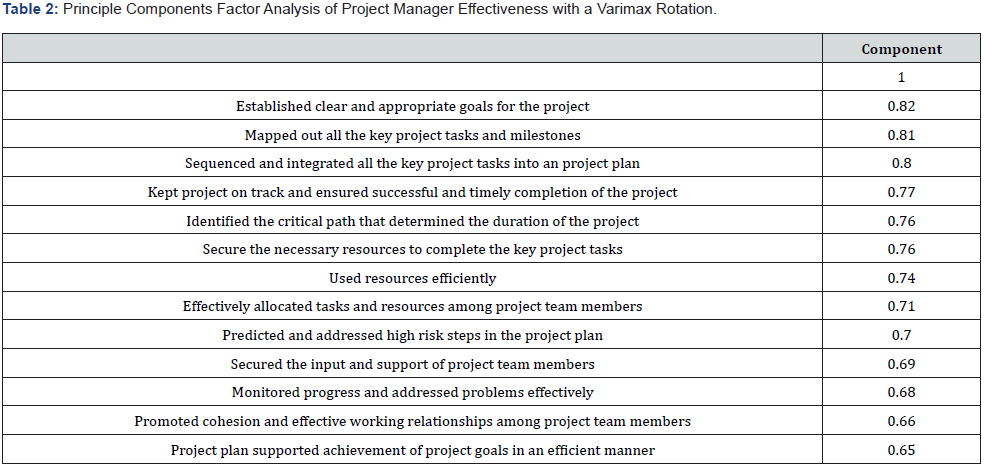
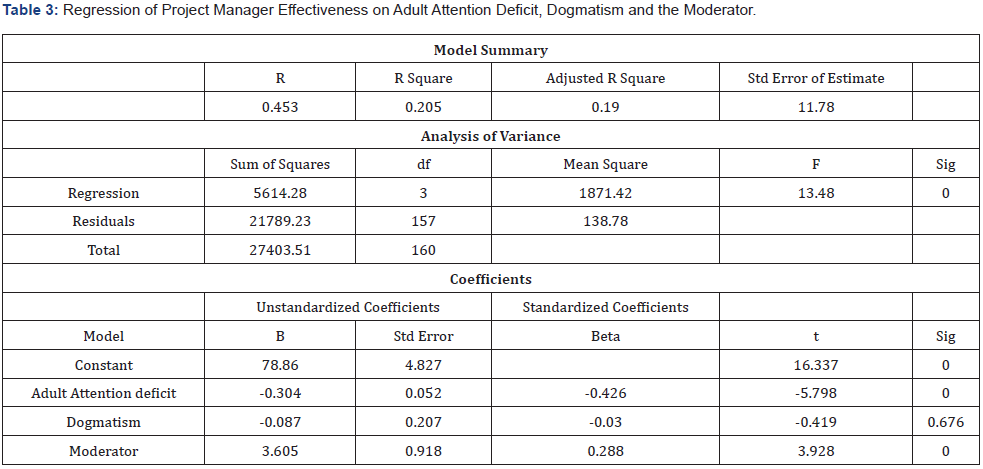
The results suggest that AAD constrained the
operational
(traditional/process) effectiveness of project managers and that the
negative relationship between AAD and operational
effectiveness declines as dogmatism increases. The directionality
of this relationship cannot be confirmed from this research study
and both opposite and bi-directional effects are possible. The
large number of studies confirming the significant contribution of
genetic factors to the manifestation of the disorder [43] provides
general support for the hypothesized direction in this study.
Recent research suggesting that certain contextual conditions like
parental conflict and inconsistent parenting may help manifest
a genetic predisposition or strengthen existing symptoms [61]
suggests that certain project conditions may contribute to AAD.
Organizations wishing to ensure the success of key projects
need to be aware of the influence of adult attention deficit and
dogmatism on project manager effectiveness. The emergence
of more empowered work cultures, tighter deadlines, the need
for creativity/innovation and project-oriented work represents
both an opportunity and challenge for disordered employees.
Disordered employees without the necessary support will
not be able to leverage their strengths and may constrain the
performance of interdependent others.
The protective influence of dogmatism on the execution
of operational project tasks by disordered project managers
suggests the need for conditions, tools and competencies that
protect higher order cognitive resources from disruptive external
and internal stimulus. The provision of project management
training/coaching, project management tools and a workspace
free of unnecessary distractions may be especially important
for project teams containing disordered employees. Although
a dogmatic style may be beneficial under relatively simple and
stable conditions, it is unlikely that a defensive and rigid cognitive
style will support project management effectiveness under
increasingly dynamic and open project conditions. Organizations
need to help disordered project managers and participants find
substitutes for dogmatic thinking processes that possess similar
protective benefits but avoid the related inflexibility and social
challenges associated with being dogmatic. Helping disordered
project managers to better manage anxiety, stress, emotional
disruption, and find an appropriate balance between assertiveness
and collaboration, is likely to play an important role in developing
constructive substitutes for dogmatic thinking.
The increasing availability of effective coaches (life,
organizational, task, peer, manager as coach etc.) [62] offers a
potential substitute for close supervision and a potentially more
accepted and developmental resource for keeping disordered
employees oriented toward successful completion of priority
tasks and projects. Effective organizational coaches could address
a wide range of cognitive, emotional and behavioral deficits,
and protect the employee from the reinforcing cycles of failure
that many disordered employees experience [63]. Establishing
reciprocal peer coaching systems within project teams or
the organization as a whole, that addresses challenges at the
individual and relational level may add considerable mutual value,
especially for disordered employees [64,65]. Coaching processes
that contain the necessary structure and content for supporting disordered employees are needed.
The effective use of project teams represents an opportunity
for distributing the creative benefits associated with the disorder
while managing the deficits. Team members and peer coaches
can help disordered employees to activate, organize, stay on
track, maintain a balance between organizational citizenship
opportunities and priority work tasks, avoid experiences of
failure and manage challenging emotions. They can also help
disordered employees address the pitfalls of rigid thinking and
behavior. In return, team members can benefit from the creativity
that disordered employees may offer. This will require the careful
design of teams to ensure optimal person-role fit and supportive
team development interventions. Team building that educates
team members about the disorder and addresses the social
and task performance challenges while taking advantage of the
benefits is required. Structured collaborative decision-making
processes that provide team members with the opportunity to
optimally locate themselves within the process should improve
person-role fit, avoid the problems of excessive rigidity and ensure
timely decisions. Shared management of projects that partner
disordered project managers with someone who is flexible and
has strong administration and social skills may support both
individual and project effectiveness.
The multi-modal approach to managing the disorder in the
workplace suggests that sustained improvement will depend on
other forms of support like the general education of both managers
and employees, establishing supportive organizational cultures
and climates, appropriate medication and coaching/training
that address key underlying cognitive, emotional and behavior
deficits (e.g. retention training to support effective and efficient
use of short term memory). The provision of employee assistance
programs that provide disordered, potentially disordered and
non-disordered employees with information about the disorder
and opportunities for assessment is an important part of the
constructive management of employee diversity. This will help to
create a more inclusive, supportive and responsive organizational
culture. This will also increase the likelihood of the employee
seeking out other important parts of multimodal treatment,
particularly medicinal support.
Education institutions, like management programs within
universities, need to assist new project managers to recognize and
respond to the symptoms of the disorder in both themselves and
others. Early diagnoses and treatment may help to prevent the
exacerbating cycles of failure that often accompany the condition.
Educating future managers about the condition will help to ensure
that they do not become a contributor to the emergence and
reinforcement of such cycles through ignorance or the inability
to be supportive. Project management training, peer coaching
systems and student team interventions that address the disorder
in a constructive manner will help prepare all future managers
for the challenges of the contemporary workplace. Education and training that improves self-awareness, emotional intelligence,
effective use of working memory and constructive assertiveness
may help substitute for the protective use of dogmatic thinking
styles.
Increasing social, economic and legal pressures to provide
reasonable accommodation for functional but disordered
employees and take appropriate advantage of employee diversity
underscores the general social value of this research.
Future research requires use of samples that are more directly
associated with the workplace. The influence of creativity within
the relationship between AAD and project manager effectiveness
requires further investigation and may reveal beneficial aspects of
the relationship. Measures of project management effectiveness
that include items related to the creative dimensions of a project,
when such dimensions are required, are needed to support this
research. A system for classifying the creative requirements of
projects will help develop the moderating variables needed to
reveal project management situations within which the disorder
may be beneficial. This research supports the general proposition
that the disorder has significant influence within the nomological
network that determines individual, team and organizational
performance.
